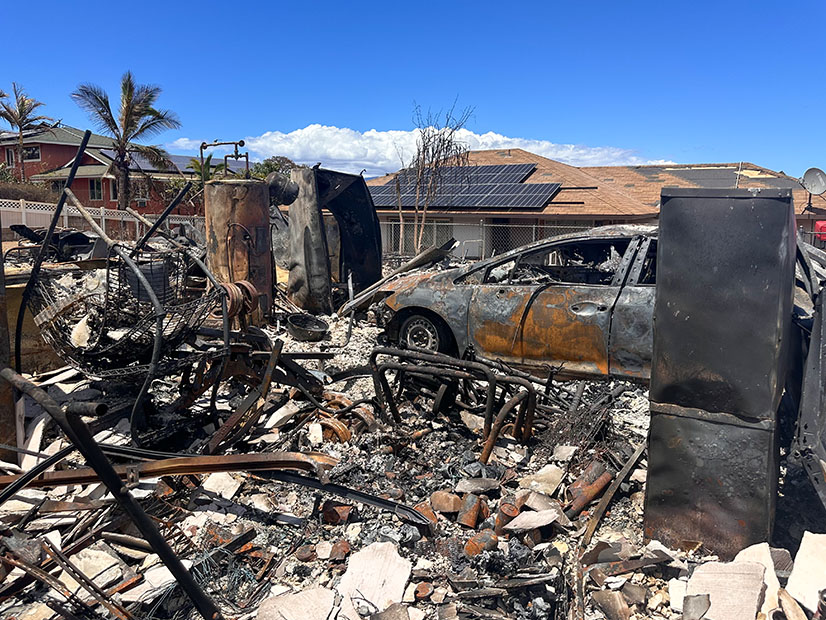
The Hawaii Public Utilities Commission on Feb. 1 approved Hawaiian Electric Co.’s five-year resilience plan to harden the grid against future natural disasters like the wildfires that ravaged the state last year, particularly the island of Maui.
The PUC’s approval of the Climate Adaptation Transmission and Distribution Resilience Program will allow HECO to receive $95 million offered by the Biden administration in August for investments in resilience. HECO’s ratepayers will fund the remainder of the plan’s $190 million overall cost. In a press release, the utility said the federal funds should reduce the program’s cost for consumers by half, with an estimated impact on the monthly bills of residential customers using 500 kWh to be 17 cents on Oahu, 47 cents on Hawaii Island and 39 cents in Maui County.
The first phase of the plan will involve replacing or strengthening more than 2,000 transmission poles on critical circuits, HECO said. Additional steps include:
-
- increased situational awareness and control through cameras, sensors and reclosers in areas with higher wildfire risk;
- removal of trees that are weak, dead, diseased or otherwise in danger of falling on power lines;
- strengthening circuits serving hospitals, defense facilities and other critical customers;
- undergrounding selected distribution circuits; and
- hardening existing control centers, moving the Maui control center to avoid flooding and building a backup control center on Oahu.
HECO faced widespread criticism in the immediate aftermath of the fires, which killed 100 people on Maui in August and burned more than 3,000 acres, including the historic town of Lahaina. As of October, more than 35 lawsuits had been filed against the utility, including by Maui County, which accused HECO of failing to power down electric equipment amid fire danger warnings from the National Weather Service. (See Hawaiian Electric Faces Multiple Lawsuits over Wildfires.)
The county also said the utility and its sister company, Maui Electric, failed to properly maintain and repair utility poles and to keep vegetation trimmed and away from power lines.
Testifying before the House Energy and Commerce Committee’s Oversight and Investigations Subcommittee in September, HECO CEO Shelee Kimura pushed back against the allegation that her company was responsible for the fires, noting that the lines in the area where the Lahaina fire began in the afternoon of Aug. 8 were not energized at the time. (See House E&C Members Grill HECO CEO About Maui Fires.)
In later supplemental testimony, Kimura added that HECO had put its high-wind protocol in place Aug. 7, including a protocol to disable automatic reclosing on certain circuit breakers and reclosers to prevent lines that trip offline because of faults from re-energizing. She also acknowledged that HECO, “like most utilities,” did not have a pre-emptive public safety power shutoff program in place Aug. 8, but that it was working with stakeholders to design such a program.
Last month HECO said it was continuing wildfire restoration efforts in West Maui, including by replacing destroyed transmission poles with more resilient steel infrastructure. While nearly all of the 12,000 customers in the area had restored power at the time, the utility warned that it will not have the ability to reroute power from other circuits until the work is completed later this year, meaning that outage restoration times may be longer than normal.


